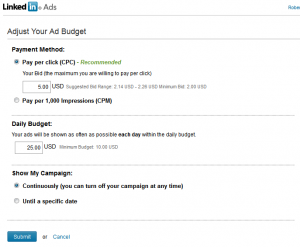How do you win big in digital marketing? Columnist Mike Sands says it’s all about knowing your customer across devices.

The Rio Olympics broke records, but not just for athletic performance or medal counts.
The 17-day event was trumpeted as the most ambitious media event in history, delivering an average total prime time audience of nearly 28 million viewers, one of the largest Olympic audiences in history.
Viewers around the world were able to watch the amazing athletic feats of Simone Biles, Michael Phelps and Katie Ledecky on apps, desktops, mobile devices, tablets, connected TVs and more. Online fans live streamed well over one billion minutes of NBC’s coverage on their connected devices — more than the combined number of minutes streamed for the 2012 London Summer Games and 2014 Sochi Winter Games.
In the media world, the 2016 Olympics represents a sea change that paved the way for fans to enjoy sporting events — the last bastion of broadcast media — wherever they wanted, however they wanted. And viewers responded by consuming more content across more platforms than any previous Olympics.
Meanwhile, in search of digital marketing gold, brands poured more than $1 billion into advertising across multiple platforms to reach these legions of viewers watching the games across multiple screens.
But how well did advertisers perform during the games? Did their campaigns pay off by growing awareness, engagement, conversions and loyalty with customers?
The unfortunate reality is that most advertisers probably aren’t too sure if their Olympic budgets were well spent. And they may never really know, especially in terms of reaching the multi-screening consumer.
The difficulty of tracking the cross-device customer to measure the outcomes of today’s multi-platform campaigns is one of the biggest problems advertisers face in this brave new world.
The exponential growth in consumers’ user of connected devices comes with an exponential level of data fragmentation. Our research at Signal (my employer) shows (registration required) that nearly 60 percent of marketers claim that merging cross-screen, cross-device consumer data as it becomes available is their biggest challenge.
Perhaps even more startling, less than a third of marketers use mobile data to identify users across devices. This means that most advertisers aren’t equipped to accurately evaluate, measure and optimize performance across screens — wasting spend, losing insights and frustrating consumers with disjointed cross-device experiences.
The cross-device challenge will only become more urgent. People are already using more devices than ever — owning about four on average.
By 2020, 20.8 billion connected devices will be in use, ranging from watches to TVs to cars to home appliances. Each of these devices is just another avenue where consumers might interact digitally with brands.
For marketers who fail to implement a cross-device strategy that allows them to see the people behind the ever-evolving screen of choice, the forecast isn’t bright.
The way forward: knowing your customer across devices
So, how can marketers keep pace with customers and measure the ROI on their advertising campaigns in this increasingly complex digital ecosystem? The answer lies in resolving cross-device identity.
As consumers engage with a brand across devices, they create fragmented identities within each platform. So marketers lack a connected view of the customer journey.
But a single view can be created by deterministically matching a brand’s first-party data across all of these devices and tying it back to the individual customer in a privacy-safe way. When brands can recognize their customers as people, they are able to target ads with precision and offer the right experience in the right context as consumers switch between web, mobile, email and brick-and-mortar stores.
Mastering cross-device identity is the key to delivering better experiences, making the most of marketing budgets and improving measurement for continued optimization. What’s more, marketers will be ready for a future where new devices will open up opportunities to engage with customers in new ways.
Read on to learn more about four benefits brands are missing out on by not conquering cross-device identity.
1. Deliver delightful experiences
Research reveals that 85 percent of consumers prefer personalized content, such as ads tailored to their personal interests. Yet, while 81 percent of marketers claim they can contextually understand their customers, only 38 percent of customers agree with this.
By achieving a single view of their customers across devices, marketers can personalize their communications to consumers, applying what they know about each individual to create customized messaging and experiences wherever they’re interacting.
2. Improve targeting to stop wasting ad budgets
Say a marketer only wants to serve an ad to a particular individual five times over the course of a campaign. But that particular individual uses three devices — a laptop, a smartphone and a tablet. Without the ability to recognize this same person across those three devices, the brand risks inundating the shopper with the same ad 15 times.
Most likely, the shopper will end up annoyed and ignore the ads — the exact opposite of the outcome the advertiser was hoping to achieve.
Resolving cross-device identity allows marketers to reach people rather than web cookies, reducing wasted ad spend and oversaturation. Plus, rather than targeting people with irrelevant messages, brands can focus on upselling or cross-selling efforts.
3. See the complete customer journey
Consumers want seamless experiences as they transition from one device to another, and from online to offline and back again. But this is one of marketers’ biggest challenges. Recent research shows (registration required) that 55 percent of senior marketers are not confident in their company’s understanding of the customer journey.
Marketers are missing a huge piece of the puzzle without the ability to see and tie together customer behaviors across devices. By solving cross-device identity, marketers can discover and appropriately react to individual wants, needs and behaviors across screens at each stage of the buyer journey.
4. Attribution for continued optimization
A fragmented view of the customer leads to inaccurate attribution, meaning marketers are missing crucial insights that can inform campaign strategies and budget allocations — and ultimately drive more conversions down the road. In fact, our research shows that 62 percent of marketers claim that the biggest downside of disconnected data is that marketing measurement is incomplete, leaving them with no way to fully measure and learn from campaigns.
On the flip side, with the ability to connect cross-device data, marketers can see how, for example, customers move from an email to a website to a mobile app where they complete the purchase. With this attribution data, marketers can segment and optimize for different audiences to drive real business results.
Being able to optimize campaigns based on cross-device attribution insights can reduce cost per action by 30 percent to 50 percent and increase ROI by 50 percent to 100 percent.
Nine in 10 digital marketers believe that cross-device identification is an effective way to improve digital advertising. Without a doubt, the brands that are the first to master this new discipline stand to win gold medals in the race to engage customers, increase conversions and maximize the return on their growing digital media investments.
Some opinions expressed in this article may be those of a guest author and not necessarily Marketing Land. Staff authors are listed here.
Marketing Land – Internet Marketing News, Strategies & Tips
(100)










